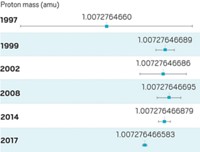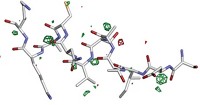Advertisement
Grab your lab coat. Let's get started
Welcome!
Welcome!
Create an account below to get 6 C&EN articles per month, receive newsletters and more - all free.
It seems this is your first time logging in online. Please enter the following information to continue.
As an ACS member you automatically get access to this site. All we need is few more details to create your reading experience.
Not you? Sign in with a different account.
Not you? Sign in with a different account.
ERROR 1
ERROR 1
ERROR 2
ERROR 2
ERROR 2
ERROR 2
ERROR 2
Password and Confirm password must match.
If you have an ACS member number, please enter it here so we can link this account to your membership. (optional)
ERROR 2
ACS values your privacy. By submitting your information, you are gaining access to C&EN and subscribing to our weekly newsletter. We use the information you provide to make your reading experience better, and we will never sell your data to third party members.
Analytical Chemistry
Energy Matching Moves Electron Therapy Forward
Chemical Physics: Strategy could lead to cancer treatment
by Stu Borman
January 6, 2014
| A version of this story appeared in
Volume 92, Issue 1

One possible way to treat cancer is to attack it with low-energy electrons emitted by an energy-transfer process called intermolecular coulombic decay (ICD). The electrons can break DNA strands and thus could be used to kill cancer cells selectively. But using ICD therapeutically is not yet feasible. “There is most often too little control over the amount of energy transferred and the exact atomic or molecular sites where ICD takes place to make the process usefully exploitable,” says Francesco Tarantelli of the University of Perugia, in Italy. He is a member of the team led by Lorenz S. Cederbaum of the University of Heidelberg that discovered ICD in the 1990s.
Now, a group that includes Cederbaum has proposed an ICD variation that makes it more controllable. Another team has verified that the proposed technique works as predicted: It generates electrons with controllable energy, in a highly site-selective manner, and with enhanced yields. The studies move ICD-based cancer therapy closer to possible realization and could lead to a new technique for studying molecular structure.
In ICD, beams of photons, electrons, or ions are directed at atoms, causing excitation. The excitation induces the atoms, when in hydrogen-bonded or other loosely bound complexes, to emit electrons and transfer energy to neighboring species in the complexes. The neighbors then also emit electrons. In some cases, the initial electron emissions occur by a specific mechanism, called Auger decay.
Theoretical chemists Kirill Gokhberg and Alexander I. Kuleff of the University of Heidelberg and coworkers, including Cederbaum, have now used ab initio (first principles based) calculations to predict that excitation can induce Auger decay and ICD in a much more controllable way. The key is using a resonant beam, adjusted to a target atom’s exact energy levels, rather than a range of beam energies. They predicted that the technique, resonant-Auger ICD (RA-ICD), could be used to induce specific atoms in controllable locations to emit electrons with tunable energies (Nature 2013, DOI: 10.1038/nature12936).
Physicists Florian Trinter and Till Jahnke of Goethe University Frankfurt and coworkers collaborated with the Heidelberg group to show experimentally that RA-ICD indeed occurs as predicted: It generates at selective locations enhanced numbers of electrons with controlled energies compared with regular ICD (Nature 2013, DOI: 10.1038/nature12927).
A key implication of the two studies “is that the elementary processes by which radiation interacts with biological matter are far more complex than perceived up to now,” comments ICD specialist Uwe Hergenhahn of the Max Planck Institute for Plasma Physics, in Germany.
RA-ICD could lead to a new analytical electron spectroscopy technique to study molecular structure and could move ICD closer to anticancer use, Jahnke says. But “real-life applications are still very far away,” he adds. “A manifold of biological, medical, and technological problems will have to be solved first.”





Join the conversation
Contact the reporter
Submit a Letter to the Editor for publication
Engage with us on Twitter